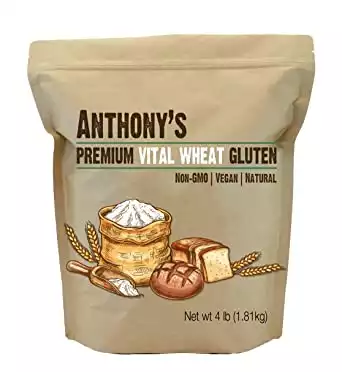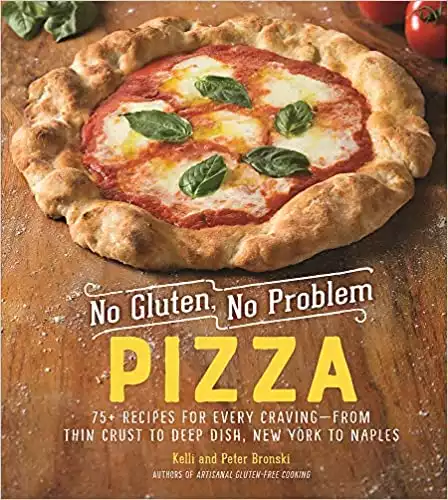Vital Wheat Gluten
Is your homemade pizza dough missing something?
Vital wheat gluten might be the answer.
Is your pizza dough not rising enough, it’s not holding its shape as you’d like it to, or it’s just too crumbly?
Perhaps you want it to be softer or crispier on the outside, or you wish it were higher in protein.
Don’t worry! Adding extra gluten to your recipe can address all these factors and more.
Here’s our guide to everything you need to know about using vital wheat gluten in pizza dough!
So, let’s get started!
Here’s What You Will Find:
What is Vital Wheat Gluten (VWG)?
“Gluten” is a protein that can be found in wheat. Most flours have some gluten in them already, but vital wheat gluten (VWG) is a powdered form of pure gluten.
Although it looks like flour and contains some starch, be aware that it is not technically flour itself.

How Does Vital Gluten Work?
When gluten is present in your dough, the physical act of kneading it creates a gluten network, a chemical structure considered viscoelastic.
In other words, it has the dual properties of being readily shaped into a new form while also wanting to retain whatever form it had a moment ago.
When yeast organisms release carbon dioxide into your dough, they form bubbles that get stuck in the gluten network structure.
As your pizza bakes, those air bubbles heat up and expand. Gluten’s viscoelasticity allows the dough to expand and accommodate that increase in size without losing too much of its structure in the process.
The result after baking is a softer interior with a crispier exterior and a large, open crumb.
How is Vital Wheat Gluten Made?
It’s a pretty quick and straightforward process; you can do it at home if you like!
Essentially, you need to take wheat flour, soak it in water to activate the gluten, and then wash away all the stuff that isn’t gluten.
To do this, you’ll knead it while it’s underwater, and the gluten will naturally start to separate from the rest of the flour.
Once you’ve separated it, all that’s left is to let it dry and grind it into powder.
Pro Tip
If you’re serious about going gluten-free, you need to be serious about becoming an expert food label reader! Use the opportunity to get good at label terminology.
Get familiar with some of the many names for potential gluten sources.
How to Use Vital Wheat Gluten in a Recipe
The first thing to do is figure out how much gluten is already in your flour.
Then you’ll need to adjust the amount of flour you’re using overall so that the total weight of the dry ingredients is the same, but a portion of that weight comes from the gluten instead of the flour itself.
All-purpose wheat flour typically has between 9 to 12% protein, but it’ll usually be more towards the lower end of that scale.
Remember that the listed protein content might not be entirely from gluten alone. However, the gluten content should still be at least 9% of the protein percentage listed on the packaging.
If you’re using bread flour to make your dough, the natural gluten content will likely be between 10 and 13%.
And although it’s not typically used for pizza dough, if you decide to use cake flour, be aware that you’ll be starting at a much lower 8% and that adding more than 2% of the flour’s weight to the dough can call for other adjustments to be made to your dough recipe.
The big thing there will be adjusting how much water you add. Also, if you do give that a try, let us know how it goes!
Also, remember that the higher the gluten content in your dough, the springier it will be.
So, you might want to stretch the dough out an extra inch or two so that it comes out the right size after baking.
When Should You Use Wheat Gluten?
With any baking, you generally want to keep your dry and wet ingredients separate for as long as possible.
So, add your gluten to your flour before adding any water, and thoroughly whisk or sift it to ensure the gluten is evenly distributed.
Adjusting the gluten content of your pizza can be done for various reasons.
Besides increased rise and a better combination of textures, high-gluten bread can also hold its shape better, so if you’re planning to add a thick layer of extra toppings, more gluten will help support that weight!
Pizza Pun
What do you call a gluten-free pizza?
An impasta
How Much Vital Wheat Gluten Should You Add?
It’s up to you how much gluten content you want, but a good target is somewhere between 11.5% and 13% of the total weight of the dry ingredients in your dough.
You can go higher than that if you want, but remember that adding more than 2% can call for other changes to the dough!
So, for example, if you’d typically use 500g of flour and you’re looking to increase the protein content in your flour from 10% to 12%, that’s a difference of 2% protein content.
So, since 2% of 500 is 10, you’d use 490g of flour and 10g of vital wheat gluten.
Which Flour Needs Vital Wheat Gluten?
If you are making pizza, vital wheat gluten it’s most commonly added to wheat and rye flour, but you can add it to any flour you want.
The style of pizza you’re going for will make a difference here too.
All-purpose wheat flour can be used for anything from thin pizza crust to deep dish, and if you’re going for a thin crust pizza, you probably won’t need as much gluten as you would for a thicker pizza crust.
How Much Vital Wheat Gluten Should You Add to All-Purpose Flour?
You’re essentially just looking to get a similar gluten content to that of bread flour, which is the preferred flour for most forms of pizza.
Since bread flour contains 10 to 13% gluten, and all-purpose flour usually has 9 to 12%, a little bit goes a long way.
Example:
Let’s say you have some flour that is 10% protein, and you want to increase the (gluten) protein content to 12%.
Is best to measure flour in grams, so let’s assume you’re starting with 500g.
These numbers show that the flour currently contains: 500g x 10% = 50g of protein.
However, your desired protein content is 500g x 12% = 60g of protein.
Therefore, the amount of gluten-forming protein you need to add to this batch of flour is: 60g – 50g = 10g.
Because vital wheat gluten is not 100% gluten-forming protein, we use the formula:
Formula to Add Gluten to Flour
1.33g vital wheat gluten = 1g pure gluten-forming protein
Therefore, we need 10g x 1.33 = 13.3g of vital wheat protein.
Vital wheat gluten is also easily measured by the teaspoon, and 1.33g = 1/4 teaspoon.
So, to get 10g of pure gluten-forming protein, you would need 2.5 teaspoons.
To summarize, adding 2.5 teaspoons of vital wheat gluten to 500g of 10% flour will increase the flour’s gluten content to 12%.
For exact calculations and more information, check our formula in our article Demystifying Gluten in Pizza.
Are There Any Suitable Substitutes for Vital Wheat Gluten?
This is an important question!
If you’ve got Celiac disease or gluten sensitivity, consuming VWG (pure gluten) will not go well for you!
Instead, you can use a product called “Orgran Gluten Substitute,” which can be found here.
There are also many gluten-free flours to choose from, such as those made from almonds, chickpeas, or coconuts.
Rice and coconut flour, in particular, will tend to crumble, and xanthan gum can help. Puffed buckwheat can also be added to gluten-free doughs to help improve their texture and elasticity.
Be aware that spelt flour, often marketed as a wheat alternative, is technically still wheat (albeit an ancient type) containing gluten.
Vital Wheat Gluten FAQs
How Do You Store Vital Wheat Gluten?
Vital wheat gluten should be stored in a cool, dry place. Your pantry should be fine, but keeping it in your freezer will not hurt it and may be better depending on your area’s climate.
Is Vital Wheat Gluten the Same Thing as Bread Improver?
Not really. It can improve your bread, and the bread improver will likely contain gluten.
Still, products advertised as bread improvers will typically have many other ingredients beyond just the gluten itself.
Can Vital Wheat Gluten Go Bad?
Unopened, vital wheat gluten can last for 7 to 10 years. Once opened, it should be used within six months if you’re not going to freeze it.
Can You Use Vital Wheat Gluten If You Have Gluten Intolerance?
Gluten sensitivity, often called gluten intolerance, is a related condition in which your body has a hard time digesting gluten. If you have either of these conditions, please do not consume VWG.
How Does Vital Wheat Gluten Affect the Flavor?
Vital wheat gluten is pretty bland so it does not affect the flavor of your pizza crust.
Some people might be able to notice it if a lot is added, but in normal amounts, it shouldn’t affect the flavor of your pizza all that much.
Is High-Gluten Flour the Same Thing as Vital Wheat Gluten?
No. High-gluten flour is not the same thing. VWG is not flour, and you cannot make bread with it alone.
Likewise, high-gluten flour has more gluten than average flour, but you can’t use it for all the same purposes you could use VWG for, such as making imitation meats like seitan.
Which Vital Wheat Gluten is the Best?
We like to use Anthony’s Vital Wheat. This is a Premium Vital Wheat Gluten, high in protein, it improves elasticity and texture of the dough, and it’s keto-friendly.
Here’s What the PROs at Homemade PIzza Pro Use and Recommend
Vital Wheat Gluten, also known as the Natural Nemesis of Gluten-Free, is derived from the protein found in wheat. Our Vital Wheat Gluten comes in powder form and is made from wheat flour that has been hydrated to activate the gluten, and then processed to remove everything but that gluten.
That gluten is then dried and grounded back into a powder. When mixed with water and spiced, our Vital Wheat Gluten will make seitan, a vegetarian "meat" that is rich in protein. Our Vital Wheat Gluten, which contains tons of protein, can also be added to regular flour to increase the content, resulting in high-gluten flour, which is ideal for baking chewier bread.
Here’s What We are Reading
For Kelli and Peter Bronski, pizza is a passion. So when Peter was diagnosed with celiac disease, they set out on a mission—to master the art of gluten-free pizza-making themselves. With insights from the best pizzaioli from Naples to New York City and beyond—and more than a decade of gluten-free recipe experience—they tested over one thousand pies in pursuit of the perfect gluten-free pizza. Now, they deliver the spectacular result:
The Last Slice
Thanks for spending your time with us here today. We hope this has been a helpful and informative guide to crafting a better homemade pizza dough.
Tell us in the comments what flour you use, how much gluten (or gluten substitute) you’re adding, and how your pizza turns out!
Additional Dough Enhancers Articles
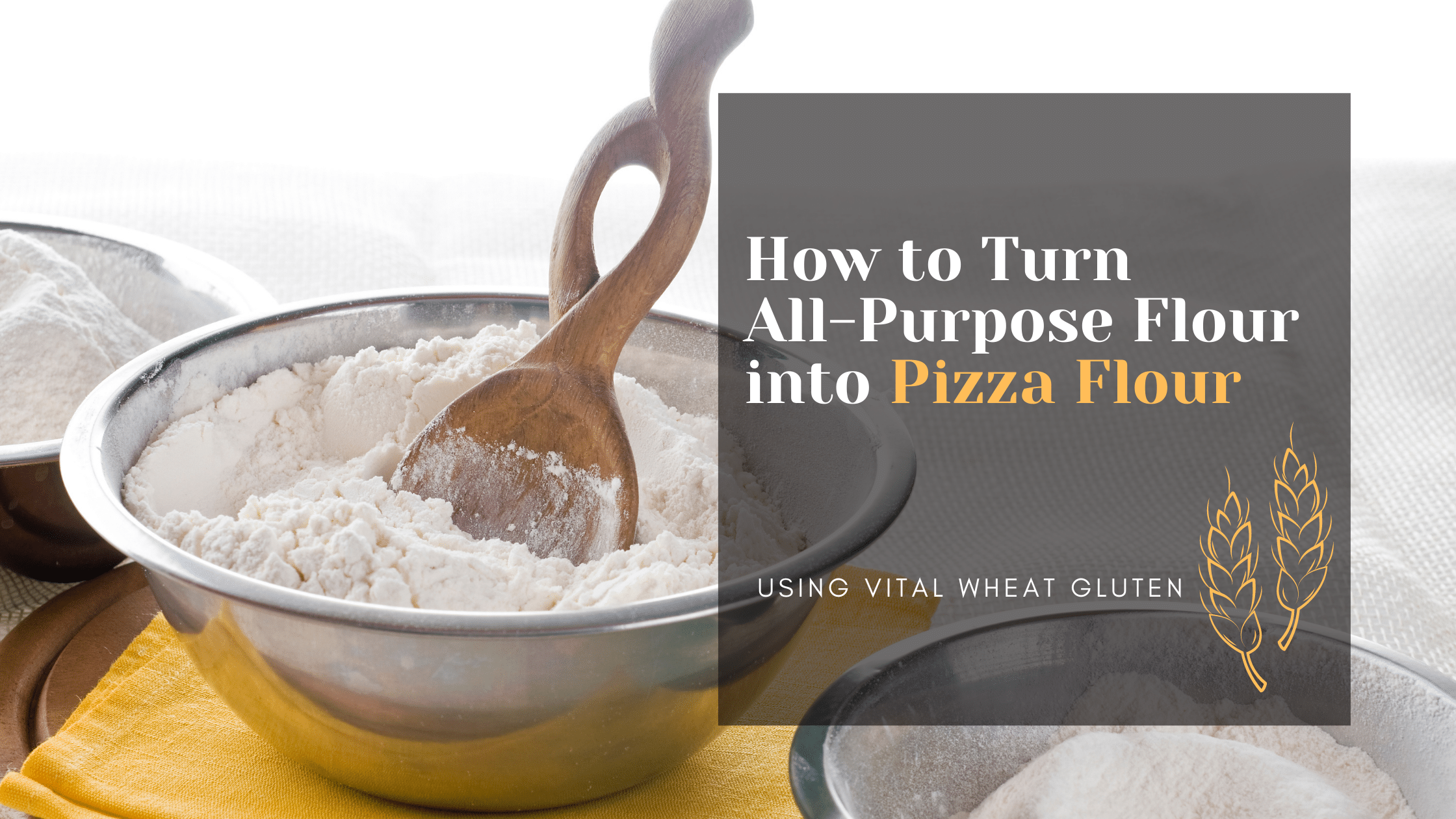
How to Instantly Turn All-Purpose Flour into Pizza Flour
the PROs
How to Turn All-Purpose Flour into Pizza Flour If you want to know how to turn all-purpose flour into pizza …

Unleash the Flavor: How to Use Oil in Pizza Dough
the PROs
This guide will dive a bit deeper into why oil will affect your pizza dough and how it can also enhance your pizza’s other attributes. Hopefully, you will be able to take advantage of these tips on oil on pizza dough in the end. So, let’s dive in.
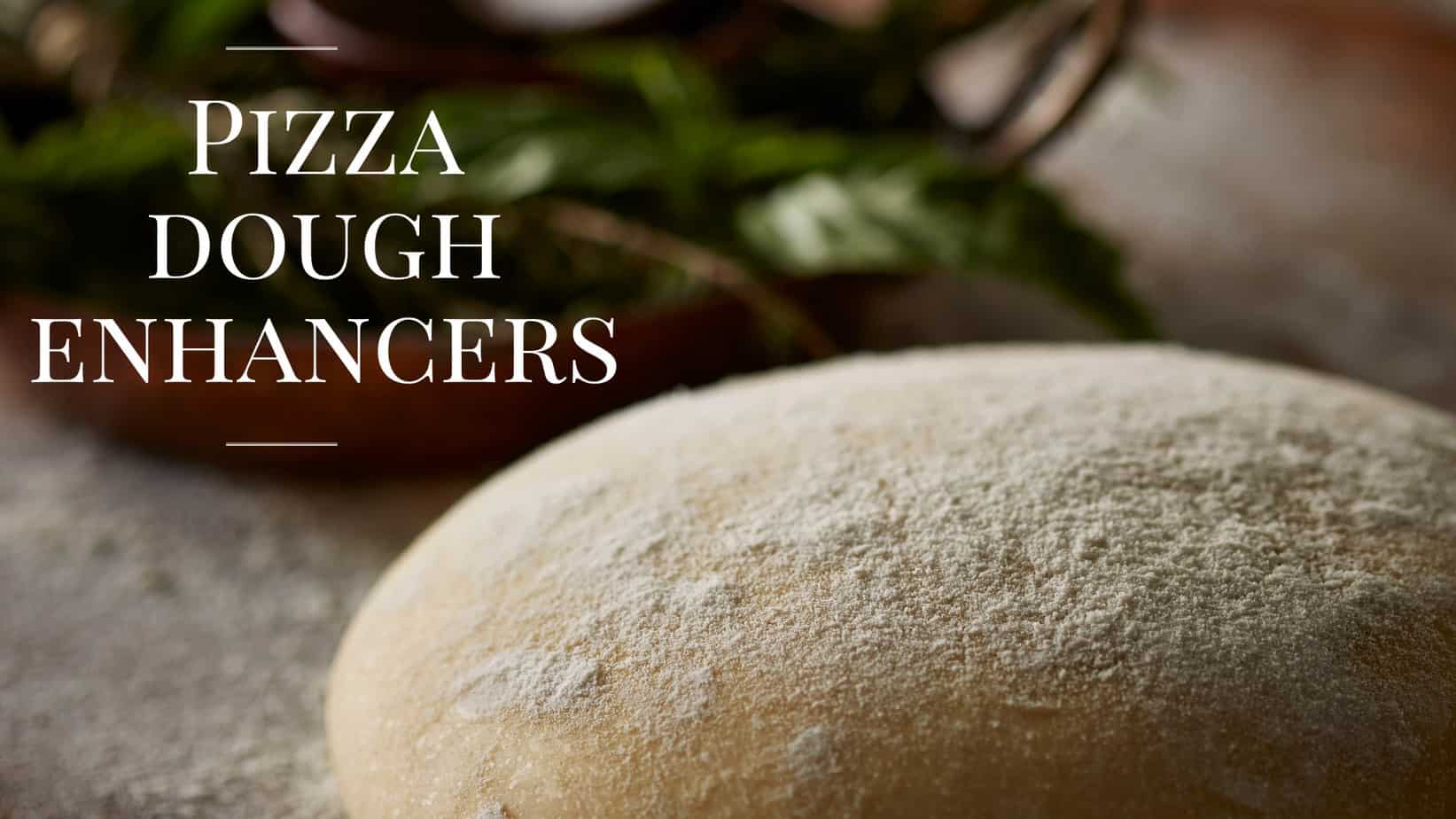
Pizza Dough Enhancers: Boost Your Pizza Dough Flavor!
the PROs
Are you eager to learn how to make pizza dough taste better? In this article, we will show you what you can do to improve the flavor and the structure of your pizza dough.

Diastatic Malt Powder: The Top Secret Ingredient Nobody is Using to Make the Best Pizza
the PROs
Master pizza bakers often praise diastatic malt powder as “the secret ingredient” in any good baking recipe. But what is it, and how can you incorporate it into making excellent pizza dough? There’s a lot to know about it, but don’t worry, we’ve got you covered!
Additional Resources on Gluten
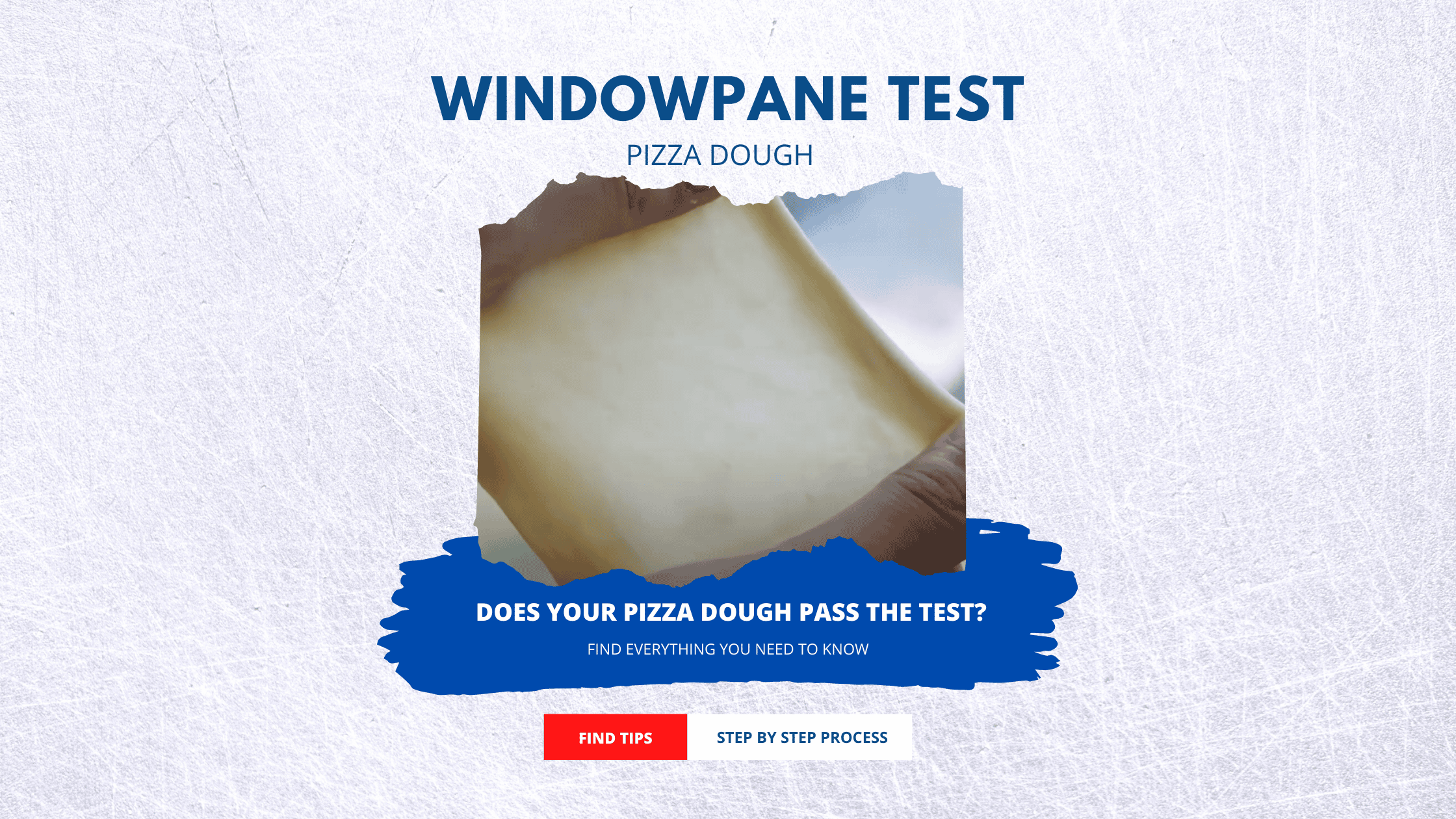
Windowpane Test: (Tips, How-to, and Everything You Need to Know)
the PROs
Pizza Dough Windowpane Test Kneading the dough is probably one of the most complex parts of baking a pizza. You …

What is Gluten-Free Pizza?
the PROs
Are you wondering what is gluten-free pizza? What’s in it? How is gluten-free pizza different from regular pizza? and so …

Demystifying Gluten in Pizza. Here’s What You Need to Know
the PROs
Understanding what gluten does and how to develop gluten in pizza crust will take you far along your journey to becoming a homemade pizza pro. So, if you are ready to master the art of making pizza dough, read on to discover what savvy pizza chefs know about gluten and how to transform it into delicious pizza crust!
Enjoy!
Not a PRO? Not a Problem!
Take a pizza class to bring your pizza skills to the next level,
so you can be a PRO!
Related Posts

Costco Pizza Delivery: Find How You Can Get It Now!
the PROs
People go to Costco’s food court for many different reasons, but the cheesy slice of pizza they serve is among …

Pizza for Beginners: Don’t Buy Pizza, Make It! Here’s How to Get Started!
the PROs
You have this idea that you want to make pizza at home as opposed to ordering it, but where do you start? Don’t worry! Here you will find answers and directions to all your questions.

Pizza Toppings Under Cheese or Over Cheese? [Why the Order Matters]
the PROs
Is Pizza Cheese on Top or Bottom? Hey pizza lovers, are you wondering if you should layer pizza toppings under …
Newsletter
Subscribe to our Recipe of the Week newsletter and receive our partners’ latest recipes, tips, and discount offers.
Keep in Touch!



